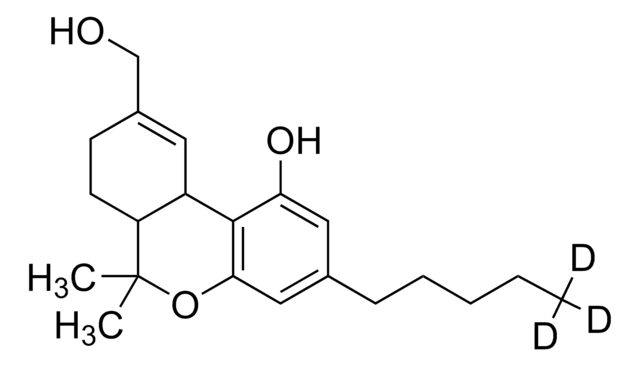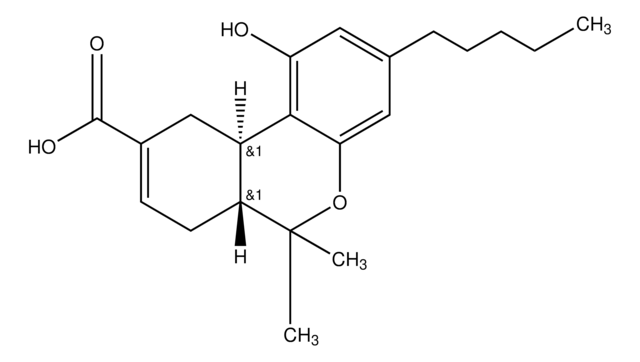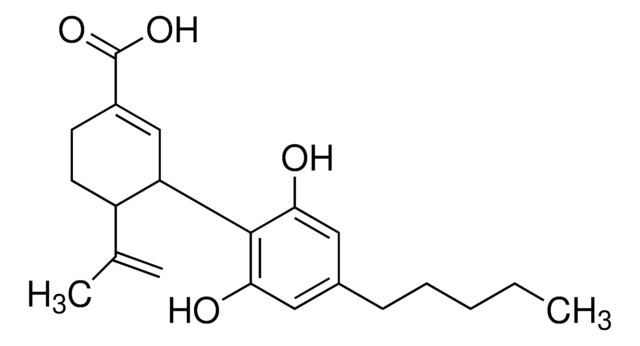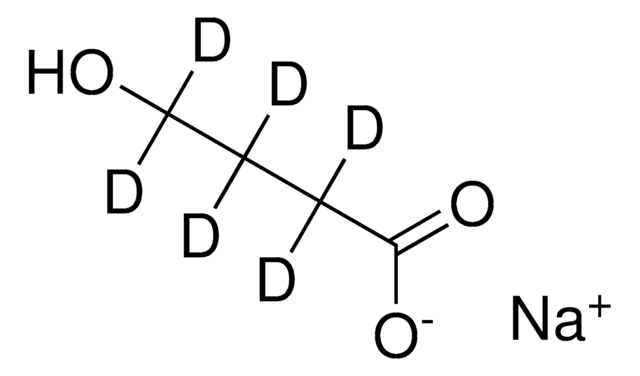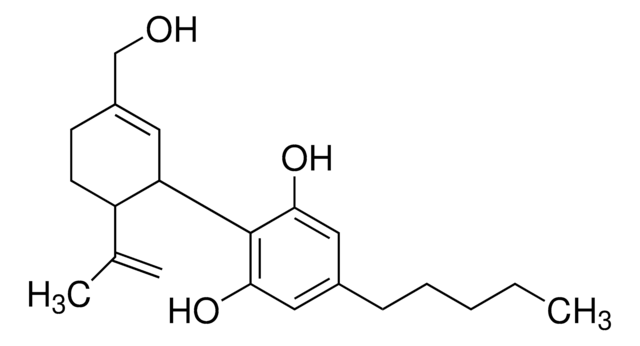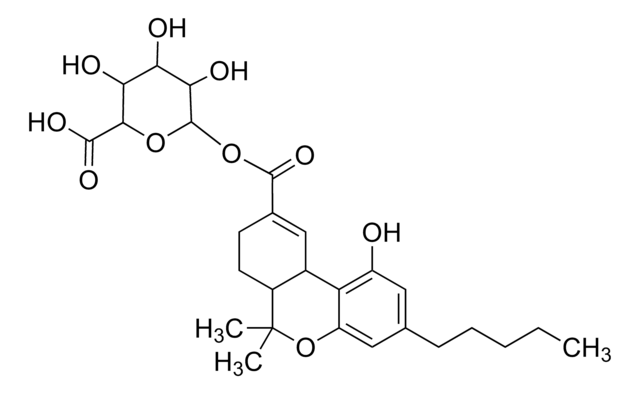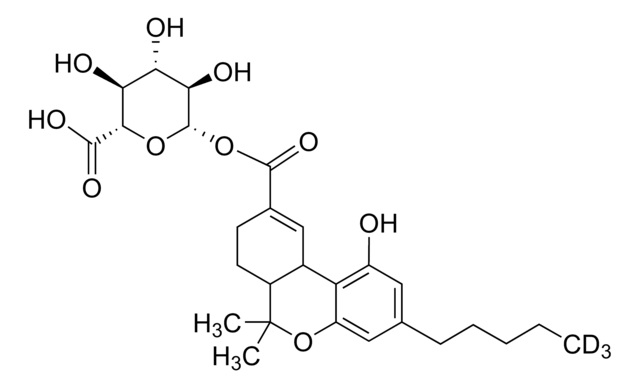H-027
(±)-11-Hydroxy-Δ9-THC solution
1.0 mg/mL in methanol, ampule of 1 mL, certified reference material, Cerilliant®
About This Item
Produits recommandés
Qualité
certified reference material
Forme
liquid
Caractéristiques
Snap-N-Spike®/Snap-N-Shoot®
Conditionnement
ampule of 1 mL
Fabricant/nom de marque
Cerilliant®
drug control
psicótropo (Spain); Decreto Lei 15/93: Tabela IIB (Portugal)
Concentration
1.0 mg/mL in methanol
Technique(s)
gas chromatography (GC): suitable
liquid chromatography (LC): suitable
Application(s)
cannabis testing
forensics and toxicology
Format
single component solution
Température de stockage
2-8°C
Chaîne SMILES
OC1=CC(CCCCC)=CC2=C1C3C=C(CO)CCC3C(O2)(C)C
InChI
1S/C21H30O3/c1-4-5-6-7-14-11-18(23)20-16-10-15(13-22)8-9-17(16)21(2,3)24-19(20)12-14/h10-12,16-17,22-23H,4-9,13H2,1-3H3
Clé InChI
YCBKSSAWEUDACY-UHFFFAOYSA-N
Vous recherchez des produits similaires ? Visite Guide de comparaison des produits
Description générale
Application
- Quantification of cannabidiol and Δ9-tetrahydrocannabinol in addition to the identification of minor cannabinoids from human plasma samples using ultra-performance liquid chromatography (UHPLC) combined with triple quadrupole mass spectrometry following a liquid-liquid extraction
- Liquid chromatography-tandem mass spectrometry (LC-MS/MS) method-based determination of 10 cannabinoids in oral fluid samples following their solid phase extraction (SPE)
- Analysis of Δ9-Tetrahydrocannabinol (Δ9-THC) and its three metabolites in plasma and urine samples by gas chromatography (GC) coupled to triple quadrupole mass spectrometer
- Development of an automated sample preparation method based on solid phase extraction (SPE) to determine ∆9-tetrahydrocannabinol (THC) and its three primary metabolites in a variety of matrices, such as serum, saliva, and urine using liquid chromatography-mass spectrometry (LC-MS)
- Simultaneous determination of cannabinoids and their metabolites in human serum samples by an atmospheric-pressure chemical ionization gas chromatography-tandem mass spectrometry (APGC-MS/MS)
Caractéristiques et avantages
- Fully characterized under ISO/IEC 17025 and ISO 17034 accreditation
- Accompanied with a comprehensive Certificate of Analysis (CoA) with data on stability, homogeneity, accuracy of concentration, uncertainty, and traceability
- Rigorously tested through real-time stability studies to ensure accuracy and shelf life
- Gravimetrically prepared using qualified precision balances to ensure minimal uncertainty
- Flame sealed under argon into ampoules for long-term shelf life
- Offered in a convenient, DEA-exempt format to improve laboratory efficiency
Informations légales
Produit(s) apparenté(s)
Mention d'avertissement
Danger
Mentions de danger
Conseils de prudence
Classification des risques
Acute Tox. 3 Dermal - Acute Tox. 3 Inhalation - Acute Tox. 3 Oral - Flam. Liq. 2 - STOT SE 1
Organes cibles
Eyes
Code de la classe de stockage
3 - Flammable liquids
Classe de danger pour l'eau (WGK)
WGK 1
Point d'éclair (°F)
49.5 °F - closed cup
Point d'éclair (°C)
9.7 °C - closed cup
Faites votre choix parmi les versions les plus récentes :
Certificats d'analyse (COA)
It looks like we've run into a problem, but you can still download Certificates of Analysis from our Documents section.
Si vous avez besoin d'assistance, veuillez contacter Service Clients
Déjà en possession de ce produit ?
Retrouvez la documentation relative aux produits que vous avez récemment achetés dans la Bibliothèque de documents.
Les clients ont également consulté
Notre équipe de scientifiques dispose d'une expérience dans tous les secteurs de la recherche, notamment en sciences de la vie, science des matériaux, synthèse chimique, chromatographie, analyse et dans de nombreux autres domaines..
Contacter notre Service technique

